
Sevier County is a county of the U.S. state of Tennessee. As of the 2020 census, the population was 98,380. Its county seat and largest city is Sevierville. Sevier County comprises the Sevierville, TN Micropolitan Statistical Area, which is included in the Knoxville-Morristown-Sevierville, TN Combined Statistical Area.
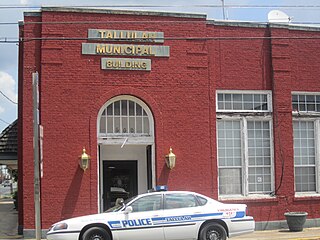
Tallulah is a city in, and the parish seat of, Madison Parish in northeastern Louisiana, United States. As of the 2020 census, the population was 6,286, down from 7,335 in 2010.
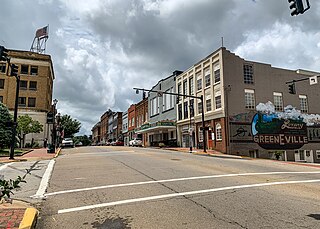
Greeneville is a town in and the county seat of Greene County, Tennessee, United States. The population as of the 2020 census was 15,479. The town was named in honor of Revolutionary War hero Nathanael Greene, and it is the second oldest town in Tennessee. It is the only town with this spelling in the United States, although there are numerous U.S. towns named Greenville. The town was the capital of the short-lived State of Franklin in the 18th-century history of East Tennessee.
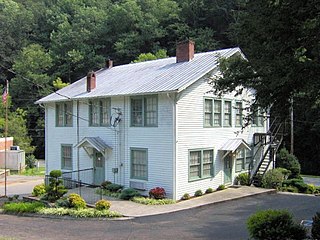
Pittman Center is a town in Sevier County, Tennessee, United States. The population was 454 at the 2020 census and 502 at the 2010 census. The town borders Gatlinburg and the Great Smoky Mountains National Park. U.S. 321 passes through the town.

Sevierville is a city in and the county seat of Sevier County, Tennessee, United States, located in eastern Tennessee. The population was 17,889 at the 2020 United States Census.

The governor of Tennessee is the head of government of the U.S. state of Tennessee and the commander-in-chief of the state's military forces. The governor is the only official in the Tennessee state government who is directly elected by the voters of the entire state.

James Sevier Conway was an American politician who served as the first governor of Arkansas from 1836 to 1840.

Ambrose Hundley Sevier was an attorney, politician and planter from Arkansas. A member of the political Conway-Johnson family that dominated the state and national delegations in the antebellum years, he was elected by the legislature as a Democratic U.S. Senator. He served as Speaker of the Arkansas House of Representatives.
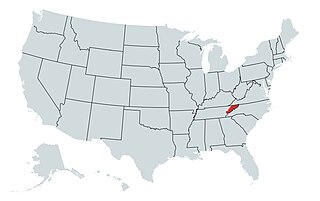
The State of Franklin was an unrecognized proposed state located in present-day East Tennessee, in the United States. Franklin was created in 1784 from part of the territory west of the Appalachian Mountains that had been offered by North Carolina as a cession to Congress to help pay off debts related to the American War for Independence. It was founded with the intent of becoming the 14th state of the new United States.

John Sevier was an American soldier, frontiersman, and politician, and one of the founding fathers of the State of Tennessee. A member of the Democratic-Republican Party, he played a leading role in Tennessee's pre-statehood period, both militarily and politically, and he was elected the state's first governor in 1796. He served as a colonel of the Washington District Regiment in the Battle of Kings Mountain in 1780, and he commanded the frontier militia in dozens of battles against the Cherokee in the 1780s and 1790s.
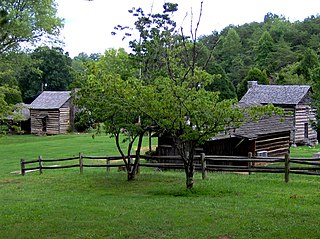
Marble Springs, also known as the Gov. John Sevier Home, is a state historic site in south Knox County, Tennessee, in the southeastern United States. The site was the home of John Sevier (1745–1815)—a Revolutionary War and frontier militia commander and later the first governor of Tennessee—from 1790 until his death in 1815. A cabin at the site was once believed to have been Sevier's cabin, although recent dendrochronological analyses place the cabin's construction date in the 1830s, well after Sevier had died.

The Knox County Courthouse is a historic building located at 300 Main Street in Knoxville, Tennessee, United States. Built in 1886, it served as Knox County's courthouse until the completion of the City-County Building in 1980, and continues to house offices for several county departments. John Sevier, Tennessee's first governor, is buried on the courthouse lawn. The courthouse is listed on the National Register of Historic Places for its architecture and its role in the county's political history.

Kodak is an unincorporated community and a neighborhood of Sevierville in Sevier County, Tennessee, United States. The small city is located along State Route 139 and State Route 66, and just south of I-40 and Knoxville, Tennessee. The elevation of the city of Kodak is about 896 feet above sea level.

Tipton-Haynes State Historic Site, known also as Tipton-Haynes House, is a Tennessee State Historic Site located at 2620 South Roan Street in Johnson City, Tennessee. It includes a house originally built in 1784 by Colonel John Tipton, and 10 other buildings, including a smokehouse, pigsty, loom house, still house, springhouse, log barn and corncrib. There is also the home of George Haynes, a Haynes family slave.

Fort Patrick Henry Dam is a hydroelectric dam on the South Fork Holston River within the city of Kingsport, in Sullivan County in the U.S. state of Tennessee. It is the lowermost of three dams on the South Fork Holston owned and operated by the Tennessee Valley Authority, which built the dam in the early 1950s to take advantage of the hydroelectric potential created by the regulation of river flow with the completion of Watauga Dam, South Holston Dam, and Boone Dam further upstream in preceding years. The dam impounds the 872-acre (353 ha) Fort Patrick Henry Lake. While originally built for hydroelectric generation, the dam now plays an important role in the regulation of water flow and water temperature for the John Sevier Fossil Plant and other industrial plants downstream. The dam and associated infrastructure were listed on the National Register of Historic Places in 2017.
This is a list of the National Register of Historic Places listings in Sevier County, Tennessee.

Rose Glen was an antebellum plantation in Sevier County, in the U.S. state of Tennessee. At its height, Rose Glen was one of the largest and most lucrative farms in Sevier County and one of the most productive in East Tennessee. While the farm is no longer operational, the plantation house and several outbuildings— including a physician's office, loom house, and double-cantilever barn— have survived intact, and have been placed on the National Register of Historic Places.
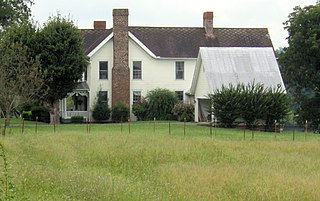
Brabson's Ferry Plantation is a Pioneer Century farm and former antebellum plantation near the U.S. city of Sevierville, Tennessee. Located at what was once a strategic crossing of the French Broad River, by 1860 the plantation had become one of the largest in East Tennessee, and one of the few in the region that rivalled the large plantations of the Deep South in size and influence. The farm remains in operation, and several of its historic structures— including two plantation houses and an 18th-century plank house— have been added to the National Register of Historic Places.

Emmons H. Woolwine (1899-1951) was an architect of Nashville, Tennessee. At least two of his works are listed on the U.S. National Register of Historic Places.
The moon-eyed people are a legendary group of short, bearded white-skinned people who are said to have lived in Appalachia until the Cherokee expelled them. Stories about them, attributed to Cherokee tradition, are mentioned by early European settlers in America. In a 1797 book, Benjamin Smith Barton explains they are called "moon-eyed" because they saw poorly during the day. Some stories claim they created the area's pre-Columbian ruins, and they disappeared from the area. Barton cited as his source a conversation with Colonel Leonard Marbury, an early settler of Georgia. Marbury, a Revolutionary War officer and a Congressman in the Second Provincial Congress of Georgia (1775), acted as intermediary between Native American Indians in the state of Georgia and the United States government.



















